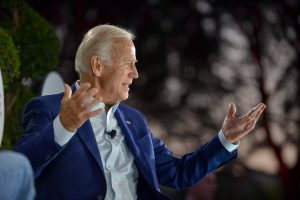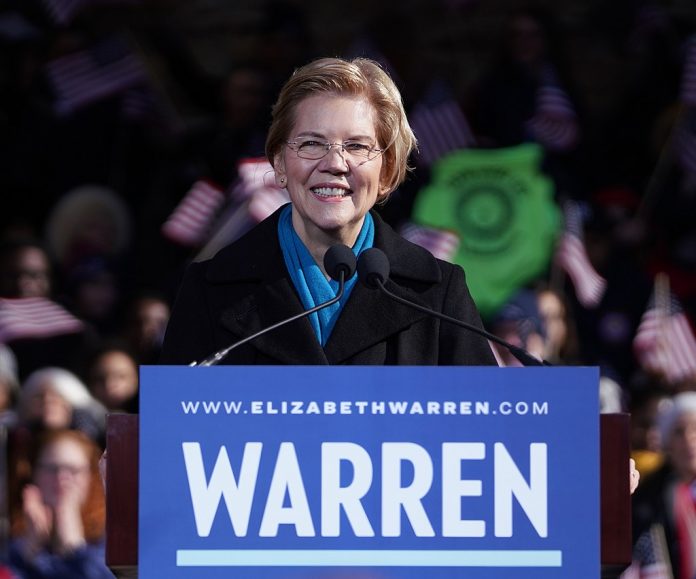After what feels like an eternity of being told that it is still early, the Democratic Party nominating season is about to begin with the first caucus, in Iowa, set to occur on February 3rd, and the first primary, in New Hampshire, on February 11th. The pre-voting skirmishes have been going on for well over a year and there have already been some unexpected developments. Both Pete Buttigieg and Andrew Yang, who were seen as minor candidates when they announced their candidacy, have outlasted and built bigger support bases than many better-known candidates. Three other candidates of color, Senators Kamala Harris and Corey Booker as well as former San Antonio mayor and secretary of the Department of Housing and Urban Development Julian Castro have performed well below expectations. Harris, once thought to be among the most formidable candidates in the race, dropped out in early December. This has led many to question the structural barriers and implicit bias that creates challenges for non-white candidates.
The primary season in 2020 can be broken into two parts. The first includes the four February states, Iowa, New Hampshire, Nevada on February 22nd and South Carolina on February 29th. The second phase begins March 3rd, Super Tuesday when 16 states and other polities including California, Texas and Massachusetts will hold primaries, and will continue through the last primaries on June 2nd. A possible third phase will occur in the unlikely event that no candidate wins a majority of delegates. If that happens, the political deal making and negotiating will continue through the convention and could potentially lead to a nominee that is not currently an official candidate.
The best way to understand the difference between phase one and two is that phase one is about positioning, perceptions, momentum and other soft factors. The second phase is more concretely about votes and delegates. Candidates who survive phase one no longer have to worry about managing and exceeding expectations, or about how the pundits see their chances, they simply have to get votes and delegates.
Three other candidates of color have performed well below expectations. This has led many to question the structural barriers and implicit bias that creates challenges for non-white candidates
As the New Year begins it would be foolish to predict with any certainty who the Democratic nominee will be, particularly with a new and extremely well-funded, but untested outside of New York City, candidate competing in primaries beginning in March. However, there are several scenarios that could unfold in phase one. Each would lead to a different set of major contenders in phase two.
Scenario One-Boring Biden: Joseph Biden has been in the lead in almost every poll since he announced his candidacy. Biden has not been an exciting frontrunner, but he has been a consistent one. His years of service to the party and country, particularly as Barack Obama’s vice president, strong political skills and extensive relationships around the country have more than outweighed his gaffe prone speaking style, questions about his age and concerns about his son Hunter Biden’s activities in Ukraine.
If Biden does reasonably well in the first four primaries, he will go into Super Tuesday as the clear front runner. To do that, Biden does not have to win all four primary states, but he needs to win at least two and finish in the top three or four in the rest. If Biden manages to finish in the top three, but close to the winner, in Iowa and New Hampshire, he could be well positioned to win Nevada, the first state where large numbers of Latinos vote. Nevada will be a very competitive caucus, but if Biden wins that he will very likely cruise to a big win in South Carolina, the first state where large numbers of African Americans, a key part of the Biden primary coalition, vote. Victories in those two states, even if Biden wins neither Iowa nor South Carolina, would demonstrate that Biden’s coalition is broader than any other candidate in the race, and position him very strongly going into Super Tuesday.

Scenario Two-The Iowa Breakout: During the last Democratic debate, Senator Amy Klobuchar and Mayor Pete Buttigieg bickered with each other quite a bit. The reason for that is that both are appealing to the same centrist constituency, but more significantly Iowa is a do or die state for both of them. There is no real path to the nomination for Klobuchar or Buttigieg without winning Iowa or coming in an extremely close second. They have both presented themselves as Midwesterners who can appeal to the geographic middle of the country. If one of them wins Iowa, that claim will look a lot less abstract. The Iowa breakout would be for Buttigieg, who is currently leading many Iowa polls, or Klobuchar who is hoping to build momentum and peak at the right time, to win the first caucus. After that, a respectable top three finish in New Hampshire would be essential.
The Klobuchar or Buttigieg scenario is thus to win Iowa, finish a respectable second or even third to Sanders or Warren in New Hampshire, with Biden being fourth or lower in at least one of those states. From there, Biden could look weaker going into South Carolina, so that state and Nevada would be more competitive. The most likely outcome in that case would be that at least three candidates, the Iowa winner, the New Hampshire winner and Biden, if he wins South Carolina, would be in the thick of the primary race heading to Super Tuesday.
There is a second Iowa breakout scenario that cannot be overlooked entirely. If Andrew Yang or Tom Steyer finish third or higher in Iowa and can bring some of that momentum and get a similar result in New Hampshire, they will be able to remain in the race longer. However, if Yang and Steyer do not win one of the early states, they will be relegated to the second tier until they drop out.

Bernie Sanders has spent much more time campaigning in non-white communities seeking to respond to the needs and concerns of people of color. Some polls show him leading among younger African American voters and making strong inroads with Latinos. (FLICKR/PHIL ROEDER/CC BY 2.0)
Scenario Three-Bernie’s Homework: One of the strangest things about the anger many Sanders supporters felt towards Hillary Clinton in 2016 is that Sanders’ defeat in that primary was largely because he did not work hard in non-white communities, and therefore was his own fault. Sanders wrote off much of the south, where the primary electorate is heavily African American, and did little to reach out to communities of color in general. Sanders, to his credit, has not made that mistake this time. While Sanders cannot get away from the reality that he represents a state that is overwhelmingly white, and that he left the diverse borough of Brooklyn to move to Vermont as a young man, he has spent much more time campaigning in non-white communities and seeking, sometimes awkwardly, to respond to the needs and concerns of people of color. Some polls show him leading among younger African American voters and making strong inroads with Latinos.
That work will not help Sanders in the first two primaries, but it means that he may be the only candidate other than Biden for whom South Carolina and Nevada are relative strengths. Of all the candidates in the race, Sanders has the best chance of finishing in the top two in all of the first four states. He has strength in Iowa, is from the state next to New Hampshire, is competitive in South Carolina and given his strength with Latinos, could win Nevada. If he manages to do those things, Sanders would be in the best position of any candidate going into Super Tuesday. Because of Sanders’ left politics and relationship to the party leadership, he would not have an easy race from there as pressure would emerge for other moderates to get out of the race, allowing the strongest seeming one a chance to defeat Sanders head to head. However, writing off Sanders in that head to head matchup would be a mistake.
Scenario Four-Warren Threads the Needle: In late summer and early fall, Elizabeth Warren seemed on a trajectory to become the nominee. She was doing her work and picking up support while Sanders, due to health issues and a stagnant campaign, seemed to be fading. Had that continued, Warren might have consolidated the left, combined that with her strength among educated liberals, picked up some African American support and become the nominee. That scenario seems much more remote now, particularly given how strong Sanders’ campaign has been in recent months. It is quite possible that Warren will not finish in the top two in any of the first four states and not have any real chance going into Super Tuesday.

Michael Bloomberg has already been spending heavily in major Super Tuesday states, and due to his all but unlimited financial resources, can continue to spend at an even greater pace for the rest of the primary season (FLICKR/DIANA ROBINSON/CC BY-NC-ND 2.0)
For Warren to remain a factor in this race, she needs to thread a very narrow needle, but it is doable. There is still enough time for her to get another Iowa bump. If she finished in the top two in Iowa, or even in the top three but ahead of Sanders, she will be in a strong position going into New Hampshire. If she follows a strong performance in Iowa with a top two finish in New Hampshire, especially if the Iowa and New Hampshire winners are different, Warren will still be in play. She would then need to finish respectably in both Nevada and South Carolina. For Warren, threading the needle does not mean coming out of the first four contests as the frontrunner, but that several candidates, including her, do well in each of those states. Warren also must finish ahead of Sanders in at least one of the top two states. If she is able to do that, Warren will still be in the mix going into Super Tuesday.
Phase Two
The first four states could make Biden the clear frontrunner, put Sanders in a position that is almost quite as strong, lead to a more complicated Phase Two with a breakout Iowa winner like Buttigieg or Klobuchar among the contenders or even produce outcomes that leave three or four candidates still in the mix going into Super Tuesday. Beginning on Super Tuesday, another variable will be part of the race as Michael Bloomberg has already been spending heavily in major Super Tuesday states, and due to his all but unlimited financial resources, can continue to spend at an even greater pace for the rest of the primary season.
The scenarios described above offer a way of thinking about the primary and decoding the possible outcomes in the first four states; and the question of who the Democratic nominee will be is a fascinating and important one. However, the future of democracy in the US depends not on who is nominated by the Democratic Party, but on that candidate defeating Donald Trump in November and on the American people demanding that Trump leave office if he loses.
www.lincolnmitchell.com
Follow me on Twitter at http://twitter.com/LincolnMitchell

